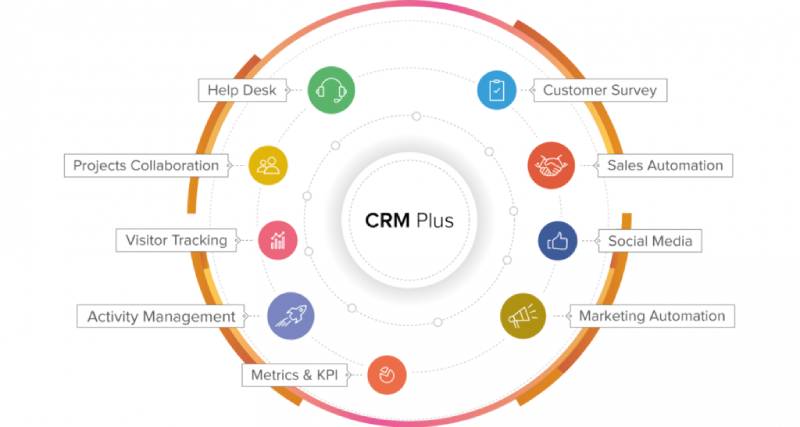Which of the following is not a current CRM trend
The current CRM trend is to use the finest software for your company's requirements. Reading blogs and following social media accounts is the greatest way to stay on top of everything that is going on in the ever-changing world of technology, especially in a continuously developing sector like marketing.
Blogs are an exciting way to remain up to speed on the latest CRM news and trends. Social media also gives information on how firms are using CRM solutions and utilizing a new technology.
The most recent CRM trend is to provide consumers with a personalized experience through automation. This gives the consumer the impression that they are receiving one-on-one attention, even while several people utilize your product.
Which of the following is not a current CRM trend?
A CRM (customer relationship management system) is a system that may be used to handle all elements of the buyer-seller relationship, including marketing, sales, service, and support.
A CRM may be invalid in various ways, such as tracking other data points like email campaigns or phone conversations.
Furthermore, numerous qualities define a strong CRM, such as the ability to interface with other apps to keep accurate client information while also configurable to suit your precise demands.
Client-centric, customer-centric, and employee-centric are the three stages of CRM progression. This blog article will concentrate on which of the following is not one of the three stages of CRM evolution?
Clients are initially interested in how a firm can solve their problems or meet their requirements.
When people decide to utilize your product or service, it becomes more about how you can assist them in achieving their objectives rather than simply fixing a problem. It's all about what you're doing for them now and what you'll do for them later when they become devoted clients.
Employee-centric activities aim to boost morale and productivity by making work more accessible and fun so that management feels appreciated for their contributions.
Customer relationship management (CRM) has evolved through three stages. The original CRM era was centered on managing connections with customers and contacts.
The second stage was social CRM, in which marketers used online communities to establish connections.
The third and final stage is behavioral CRM, which focuses on providing a more personalized experience for each customer to maximize sales potentials by leveraging data collected from interactions across channels such as email, SMS messaging, and social media platforms such as Facebook and Twitter.
Which of the following is not commonly seen in a CRM database?
A CRM database contains a lot of information, but is it all necessary? No, it does not. Many data bits do not belong in the system and can be removed or prohibited from being saved entirely. This blog post will cover which things should not be saved to your CRM database, as well as why they should not be preserved.
This blog post will assist you in determining what goes into your CRM Database and what does not go into the system so that you know exactly how much space you have for future deletions or additions from the list of records without worry.
The article also includes instructions for removing unnecessary data from a CRM database and links to related resources.
A CRM is a customer information database. Contact information, purchasing history, and previous encounters with your organization are all examples of data that may be discovered in a CRM database. A typical example is the name of the person you're attempting to contact at your favorite restaurant.
You might use their first and last name, or they could just have provided you with their phone number when you placed your order over the phone.
This implies that if you know someone's first and last name, you should be able to discover them on LinkedIn by first searching for their email address or username (or both!). If you successfully locate them on LinkedIn, you will be able to "send invitations" to them.
What is the key distinction between contact and opportunity management?
The fundamental distinction between contact management and opportunity management is that the former focuses solely on contacts while the latter focuses on opportunities.
The former comprises contact information such as name, email address, phone number, and so on. In contrast, the latter includes information such as account status and income potential for a certain firm.
In contrast, Opportunity Management Software provides a platform for organizing all of your customer contacts and prospective sales prospects in one location.
Which of the following statements regarding the CRM system is incorrect?
A CRM is a customer relationship management system that enables organizations to develop and maintain strong client relationships.
There are several applications for this sort of software, but one of the most prevalent in companies today is an internet marketing tool.
You'll receive your website where you can publish blog entries about your products or services, develop email campaigns targeted to each consumer, and even sell your items on e-commerce sites like Amazon or eBay.
The question now is, which of these choices does not work? One possibility is that someone tries to use CRMs only to keep track of sales leads to contact them.
Finally, the fundamental guideline of CRM is to keep things simple. The number of customer contact points and interactions that CRMs must manage has risen with the number of marketing channels.
This generates a massive quantity of data for marketers to sort through as they try to make sense of all these relationships between consumers, campaigns, and advertising messages. It is critical to simplify how we interact with our consumers and how we utilize technology in general.



